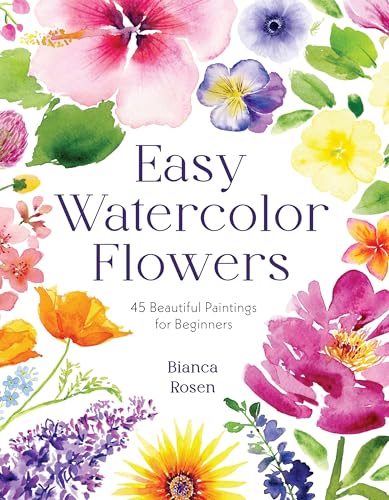Watercolor Workbooks: Beginner-Friendly Art Exploration
Unleash Your Inner Artist: Exploring Beginner-Friendly Watercolor Workbooks
Watercolor painting 🎨 can seem intimidating at first glance, but it doesn’t have to be! Beginner-friendly watercolor workbooks are designed to guide aspiring artists through the fundamentals, building confidence and skills with each brushstroke. This article dives into the world of watercolor workbooks, focusing on features that make them ideal for beginners and showcasing why they’re a fantastic starting point for your artistic journey.
What Makes a Watercolor Workbook Beginner-Friendly?
A beginner-friendly watercolor workbook is more than just blank pages. It’s a structured learning tool, thoughtfully crafted to provide a supportive and encouraging experience for those new to the medium. Here are some key features to look for:
Step-by-Step Instructions 📝
Clear and concise instructions are crucial. The best workbooks break down complex techniques into manageable steps, often accompanied by visual aids like diagrams or illustrations. This allows beginners to follow along easily and understand the reasoning behind each step.
Pre-Printed Guides and Exercises ✍️
Many workbooks feature pre-printed guides, such as color mixing charts, practice strokes, and even outlines for simple paintings. These guides help develop muscle memory and provide a framework for experimentation without feeling overwhelmed. Exercises might include practicing washes, blending colors, and creating different textures.
High-Quality Watercolor Paper 📃
The paper itself is a critical component. Beginner-friendly workbooks should use watercolor paper specifically designed to handle water without buckling or warping excessively. Look for paper that is acid-free and of a decent weight (140 lb or 300 gsm is a good starting point). This ensures a better painting experience and allows for corrections without damaging the paper.
Focus on Foundational Techniques 🧑🏫
The workbook should prioritize the foundational techniques necessary for watercolor painting. This includes:
- Color Mixing: Understanding primary and secondary colors and how to create different shades and hues.
- Basic Washes: Mastering flat washes, graded washes, and wet-on-wet techniques.
- Brush Control: Practicing different brushstrokes to achieve various effects.
- Layering: Building up color in layers to create depth and dimension.
Project-Based Learning 🖼️
Instead of just isolated exercises, look for workbooks that incorporate project-based learning. This approach allows you to apply the learned techniques to create finished pieces, providing a sense of accomplishment and encouraging further exploration. Projects might include painting simple landscapes, flowers, or animals.
The Benefits of Using a Watercolor Workbook
Using a watercolor workbook offers several advantages for beginners:
- Structured Learning: A workbook provides a clear path for learning, eliminating the guesswork of where to start.
- Reduced Frustration: The pre-printed guides and step-by-step instructions minimize the chances of making mistakes and feeling discouraged.
- Confidence Building: Successfully completing the exercises and projects in a workbook builds confidence and motivates continued practice.
- Cost-Effective: A workbook is often a more affordable way to learn than taking formal classes.
- Convenient and Portable: You can practice your watercolor skills anytime, anywhere, with a workbook in hand. 🎒
Beyond the Basics: Exploring Advanced Workbooks
While designed for beginners, the concepts learned in these workbooks carry over to more advanced techniques and painting styles. Once you’ve mastered the fundamentals, you can explore more complex subjects, experiment with different styles, and develop your own unique artistic voice. So, grab a beginner-friendly watercolor workbook and embark on a colorful and rewarding artistic adventure! 🎉





Post Comment